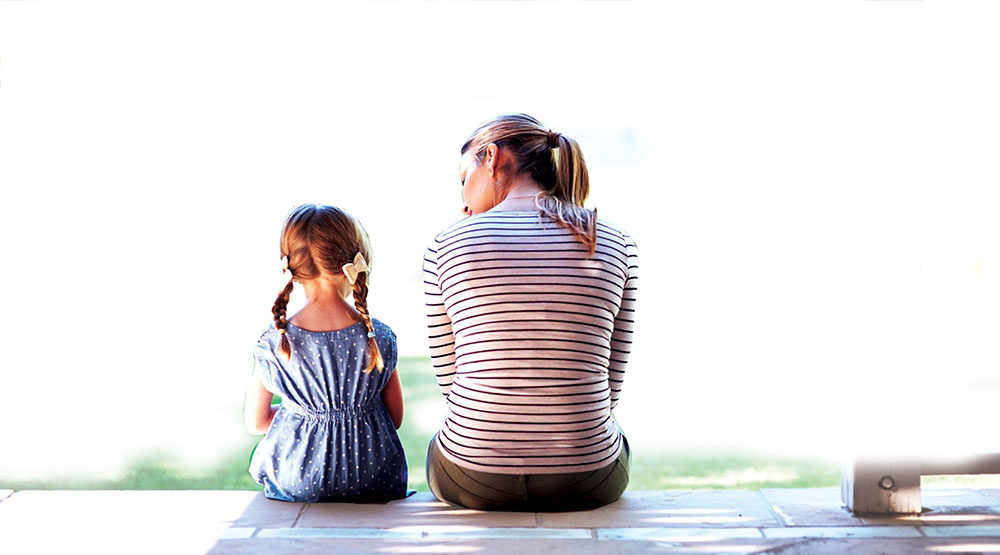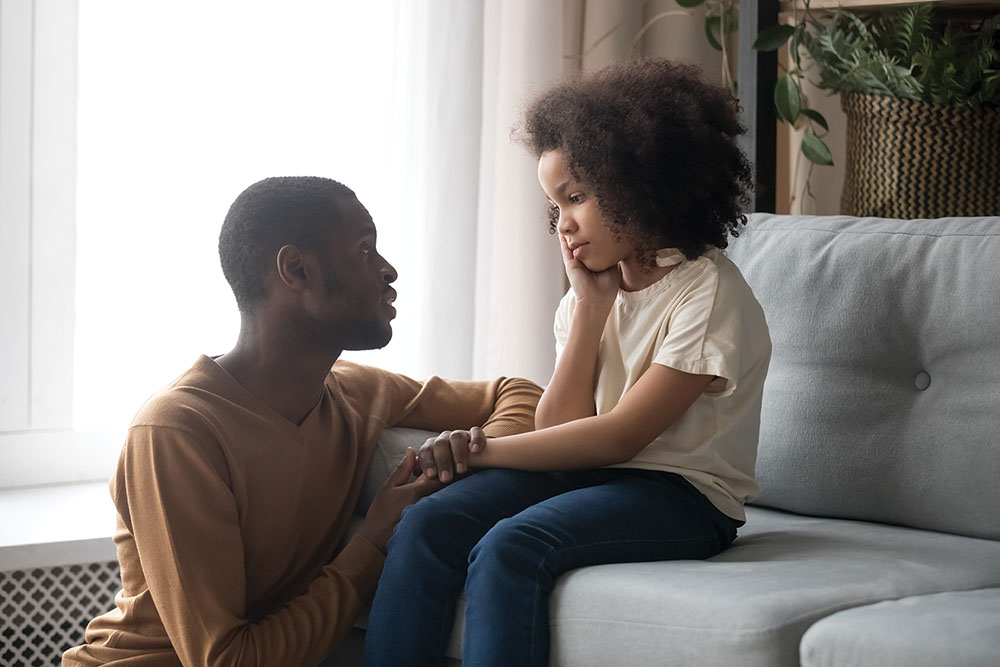
The United States has seen an inflation in gun violence, with active shooter incidents becoming alarmingly more common in recent years. They increased from just three in 2000 to 40 in 2020, according to FBI data. Heartbreakingly, Americans are seemingly inundated with mass shooting scares and alerts, even in societal situations that should be safe and peaceful, i.e. parades, shopping malls, and—horrifyingly—schools.
It’s easy to feel helpless amid such existential threats, and there are no easy answers for parents, who are often worried themselves in looking for ways to address children’s fears of recent shootings.
Three local experts share their advice on this difficult topic below. They explain how parents can help kids process situations in which their trust in schools and other community locations has been broken by outside violence.
First, it’s normal to worry, and it’s always good to be prepared.
Dr. Aronica B. Cotton, medical director of child and adolescent psychiatry services at MedStar Montgomery Medical Center, wants parents to know that their fear and uncertainty surrounding community violence is normal and valid.
“Just to throw in a little science…brains were made to scan the environment for danger, and so we have a bias to dangerous, negative thoughts and situations,” she says.
But there are steps adults can take to ensure children are in capable hands, adds Dr. Dan Hoover, clinical child and adolescent psychologist at the Center for Child and Family Traumatic Stress at Kennedy Krieger Institute.
“I think parents and caregivers do need to do everything in their power to (ensure) that their child does have safety, Hoover says. “So, that means parents (and administrators and teachers) making sure school is safe to the degree they can.”
This, of course, has its nuances. “As with so many things, being prepared is important, but there is a big difference between keeping water, energy bars (and) a change of clothes in the car and building a fallout shelter,” explains Dr. Sherri Widen, developmental psychologist and research scientist, and manager at Committee for Children, a global nonprofit championing the safety and well-being of children.
“Talk to your child about what to do and where to go in case of emergency. Help them identify adults at school or in the community they can go to if they need help or feel unsafe, but, also assure your child that they are safe and can keep being a kid,” she adds.
Model a measured response and validate your child’s concerns.
Today’s parenting environment is tricky, acknowledges Cotton. “It can be difficult for parents to want to try and protect their children—to let their children know they’re here for them and also to balance that with giving their kids confidence that they can handle difficult situations,” she says. “So, my recommendation would be for parents to take a more mindful approach if they can—take a step back and think about how they handle difficult situations, because more often than not, kids are looking towards the parents about how to react.”
Hoover agrees. “Children will often take their cues from the adults and their older siblings or their caretakers. If they sense, verbally or nonverbally, that the caregiver is really nervous…then it’s going to make the child have a lot more difficulty trusting and going to school and trying new things,” he says.
“To the best of your (ability), be calm when talking to your child about the event,” Widen adds. “Modeling strong social and emotional skills will help your children respond in similar ways,” and these skills will set them up for future success.
Cotton recommends beginning with validating your child’s concerns about returning to school or other places. “You say it’s understandable that they would be afraid and try to get them to think about other times when they’ve been to parades, when they’ve been to school, and nothing happened. So, yes, this bad thing happened this one time, but there’s so many other times when a bad thing didn’t happen.”
Be intentional in how you guide and interact with your child.
If the brain is wired to recognize the bad, “we have to be intentional about making sure that we take time to recognize when things are going well,” Cotton explains. “Even if that’s just like pointing out to your kid, ‘Oh, there’s so many pretty pink flowers,’ or ‘Oh, look at the sunset,’ or giving them a hug or a smile…If we take time to reinforce (pleasant things, it) start(s) to convey to the child that they’re safe.”
Families should encourage children to talk about how they feel, Widen notes, as talking about emotions aids in children’s emotional management (Garner 2010). This is a good time to discuss reliable vs. unreliable news sources with older children to help them “develop critical thinking skills and make good decisions based on data,” (CASEL, 2020) she adds.

For children who are reluctant to discuss their thoughts about violent events, Widen advises parents to watch their behaviors for any notable changes in routines or activities, which may indicate a child is struggling. “Talk to your child during times when they open up to you the most,” she advises.
Additional helpful strategies for nervous kids include doing things that help calm your child (i.e. snuggling with a pet or toy), encouraging things that burn off energy (i.e. physical exercise) and joining the child in these so “they feel safe and more connected to you,” Widen adds.
Cotton recommends leaning on what is developmentally appropriate for kids when discussing instances of violence, ensuring that news isn’t passive but comes directly from the caregiver. Cotton advises parents to watch what they have on the TV that children may see unintentionally.
Help your child rebuild trust gradually.
Managing a child’s response is essential in promoting healthy coping and reintroduction mechanisms, explains Hoover “A natural response to anxiety and worry is, of course, to avoid what’s scaring us, but the problem with that is that the more we tend to avoid scary situations that make us nervous, the more scared we get. And so a big part of helping the children…is to help them face fears in a reasonable and perhaps gradual or careful way.”
Hoover advises parents to encourage children to go to school and push through discomfort, especially if they are sure the situation is as safe as it can be. Sometimes, he notes, for both children and caregivers this is best accomplished with a stepwise approach.
“So, step one may be stepping outside your house for a few minutes and going back in,” then getting to a further neighborhood corner and going back in, etc. “In the end, the real job is to get back out there…and then the fears and anxieties tend to fall off when you do that.”
“If you or your child is really struggling with their thoughts or emotions about feeling safe at school or in public situations, consider looking for counseling in your community. A counselor or therapist may be able to help your
family process the event and begin to move forward,” Widen adds.
Additional Resources for Parents







